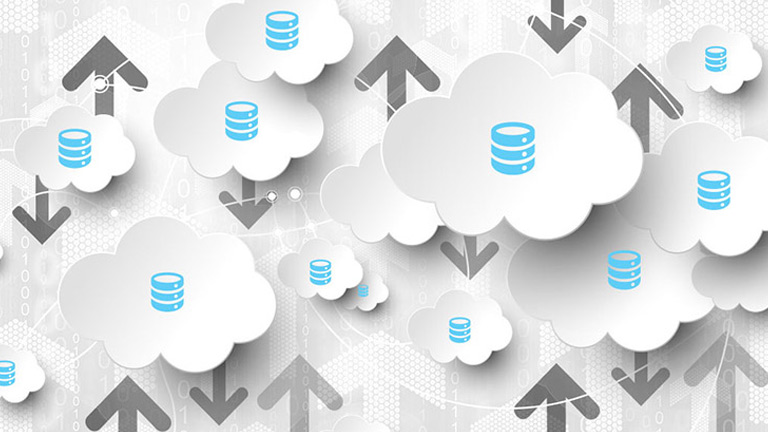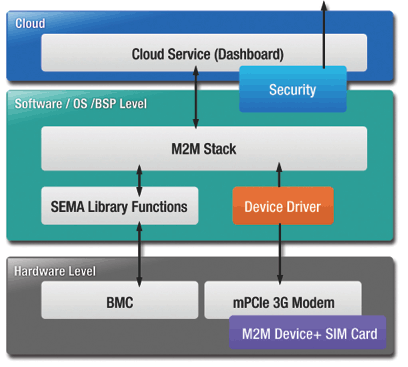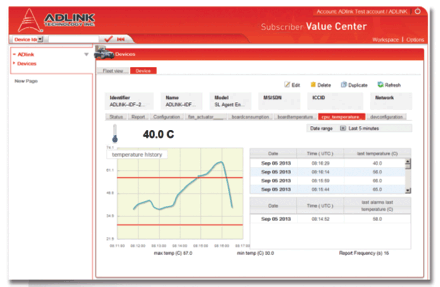The Internet of Things Pushes the Possibilities Offered by Big Data

Easy, Centralized Access to System Data Through Cloud-based Remote Management Reduces Costs and Increases Service Performance in Any Embedded Arena
The concept of the Internet of Things (IoT) encompasses things as tangible as a light switch, things as ethereal as a cloud, and all things in-between. But at the end of the day, IoT is really about data – the data acquired from connected devices in our homes and businesses, how that data gets from these devices to a central storage point, and the interface we use to access and analyze that data. How we use that data is the key to unlocking the lifestyle and business advancements that are offered by IoT.
So let’s talk business. Embedded systems run the world. Whether the arena is transportation, defense, infotainment, medicine, communications or industrial automation, optimal technology performance is essential to this mission. Systems must be stable and reliable to run critical applications, often with non-stop, low power performance while facing environmental demands like extended temperatures and extreme shock and vibration. Outages and downtime are not an option, and this imperative is a key performance requirement of connected systems. Managing a vital level of technology stability is a significant design challenge, and requires advancements in control and system management tools that can detect potential problems before they become realized.
The shift to greater connectivity has immense impact on how system developers are handling this challenge. Today’s movement toward IoT, where smart devices share data in real-time, has also driven embedded devices to evolve from isolated systems to connected, intelligent platforms. This offers a new era of system management and maintenance benefits that were not available for offline devices; system operators can now capitalize on cloud access for centralized, proactive management that reduces costs by anticipating maintenance and avoiding location-based repairs.
Integrating Remote Management into Embedded Solutions
Connecting to remote devices can be done in different ways, but all require hardware, firmware and software components. A good place to start is with a dedicated board management controller (BMC). Initially designed for power sequencing tasks, the BMC has evolved to include many new and useful features for board management and control. Measuring the supply current to get a snapshot of the system’s power consumption is only one example of these new capabilities. And, compatibility with the latest Embedded Application Programming Interface specification (EAPI) reduces design efforts to port existing calls to the BMC.
Providing the interface from the hardware to the operating system is one of the remote management system’s most important functions. The BMC first collects all relevant information from the chipset and other sources. Utilizing the System Management Bus, the application layer fetches the data and presents it to the user, displayed either in the BIOS menu or a user-friendly dashboard suitable for supervision and troubleshooting.
System operators can view and consider graphs illustrating various vital stats of the system, such as the power consumption or temperature of both the CPU and the board, queried every second and optionally written to a system log file stored locally for use by the system administrator. Users also have access to general board information, secure user access and storage areas, and fan, GPIO and I²C bus controls. The BMC can use smart fan controller technology to automatically relate measured CPU temperature to fan speed.
Through the embedded board controller, toolsets can also provide a defined amount of storage for normal end user data. This memory area is optimized to store serial numbers, keys, configuration data and other sensitive or board-specific information, as it remains independent from the BIOS and is not cleared or restored during BIOS updates.
A separate secure area can provide additional storage, ideal for critical data such as secure key codes. This area can be protected through a one-time programmable hardware fuse to provide maximum security, and offers features similar to Trusted Platform Modules (TPM) or SIM cards. System operators can attach a unique key to their system, preventing data from read or copied without administrator permission.
Forensic information available after system or module failures includes minimum and maximum temperature of the CPU and system, as well as the cause of the last system restart event – all of which can be used to analyze system or module failure.
Adding Value with Device-to-Cloud Strategies
Cloud connectivity takes today’s intelligent middleware a step further than previous generations of remote management technology. By employing a cloud server architecture and an M2M (machine-to-machine) stack on top of the intelligent middleware, embedded devices can connect to the cloud without additional design requirements. Pushing data to the cloud enables operators to verify, monitor and manage system performance from a single, central location – improving reliability and reducing management costs.
For example, the M2M stack pushes system data to the user’s cloud server via any kind of TCP/IP connection. System managers have easy access to data and analytics through any commercial cloud portal, using any device (e.g., PC, tablet, smart phone). (See Figure 1)

Figure 1: Device-to-Cloud
When systems are available, operators can observe their performance. Cloud-based remote management furthers that process by enabling observation anytime, anywhere. Embedded management agents may be used to continuously upload data through an encrypted Transport Layer Security (TLS, the successor protocol of Secure Sockets Layer or SSL) connection. That data is generally accessed through a web-based information dashboard. The dashboard can show temperature and power consumption information for different parts of the embedded system. With data that can be accessed at any time, operators can determine if performance is acceptable even if certain values fluctuate from normal settings.
The same dashboard can also be used for policy-setting, allowing system operators to define limits for several kinds of data. The cloud application software continuously analyzes the incoming data and, if user-defined limits are reached, an alarm will issue an event. Using a mobile device with two battery packs as an example, the device is running from the primary battery with a secondary battery as backup. The backup battery becomes active if the power capacity drops below 10 percent as reported by the embedded management agent monitoring power consumption. (See Figure 2)
If the capacity of the primary battery pack drops below 10 percent, an alarm is generated and the remote agent switches instantly to the secondary battery pack. In parallel, the system operator is informed via SMS text message or email that the device must be charged. Operators can proactively interact – rather tan simply react – with the system for better reliability, dealing with potential issues in advance, as well as responding quickly to downed systems and preventing damage and financial loss before it happens.

Figure 2: Subscriber Value Center Dashboard
Cloud-enabled embedded management agents offer the additional advantage of being able to remotely control system parameters; specific user configurations will trigger certain actions to execute automatically. This is possible for a large number of devices, enabling a form of fleet or multiple device management. Implemented through the M2M stack, users can set up a cloud application to control different devices, and the cloud application observes the current health status of the connected embedded systems. Before a device fails, the cloud application may recognize the malfunction through these remote management functions, enabling a quick reaction, such as shutting down a system before any harm comes to it. System operators have the advantage of being able to rescue systems, as well as check and correct malfunctions. Repair costs are reduced, and workloads can be redirected from one system to another, which eliminates downtime in event of equipment failure. Further, system longevity is increased when administrators can react before severe hardware damage occurs.
Broad Promise as M2M Service
A centralized, cloud-based approach lends itself well to an intelligent services business model, where system operators subscribe to the level of monitoring and management appropriate for their application and number of devices. As M2M strategies unfold – for example in healthcare, smart metering, smart homes, POS and retail banking, factory floor systems and connected buildings – the business case for intelligent services increases.
Certain ‘classic’ embedded applications have an intrinsic investment in remote management services. Applications such as fleet management, public safety, utility substation monitoring or any implementation that encompasses field service or a broad distributed network, are poised to embrace advancements in remote access and management. However, cloud-based management services have a much broader application, opening doors in the spectrum of embedded arenas. Industries where remote management would have been an asset, rather than a requirement, now have easier access to sophisticated data that enables a tangible competitive edge.
Cloud access is available in solutions that start at quantity one, enabling all manner of commercial goods manufacturing to benefit from tapping into powerful, real-time system data. Medical devices, industrial automation, office equipment or devices that are fixed installed or moving in the field – any application that incorporates an embedded board – is a candidate for cloud-based remote monitoring services.
Embedded, connected systems can generate and collect a vast amount of system performance data – and designers are now capitalizing on cloud technology to share this data for reduced costs and improved reliability. Remote management eliminates the need for proximity to maintain and troubleshoot distributed devices; this reduces costs associated with both physical travel and system downtime. In addition, cloud access means critical systems are available for observation from a simple, centralized location; and operators can remain informed about system health and status, and use real-time system intelligence to make better, more cost-effective decisions regarding service and performance. Service is more strategic as administrators influence and interact with system performance, predicting and preventing failures in advance of critical alarms. Information gathered, shared and applied is at the heart of IoT – creating a better end-user experience, reducing costs and building revenue, enabling new applications, and improving the overall value of technology.

